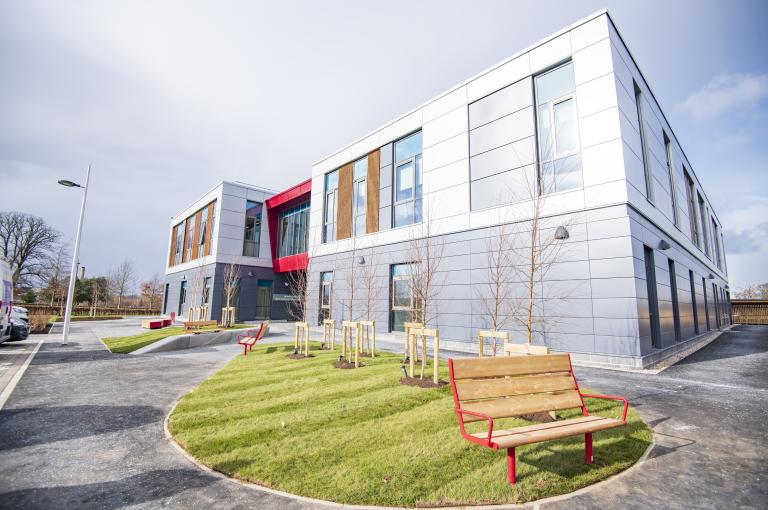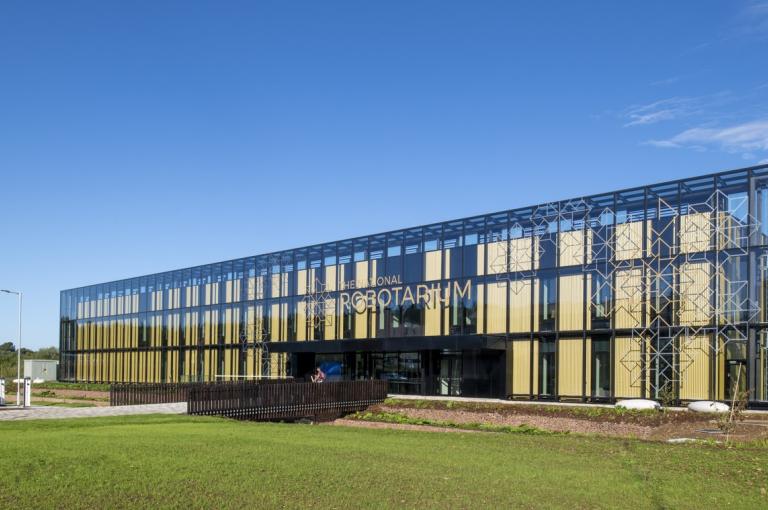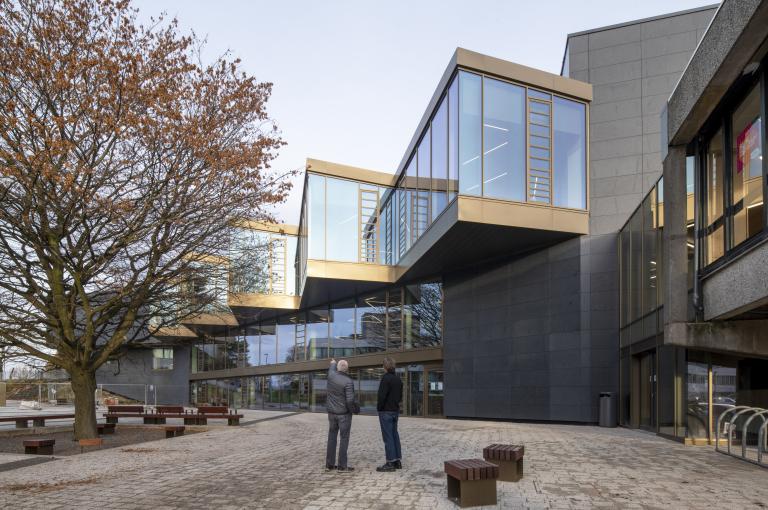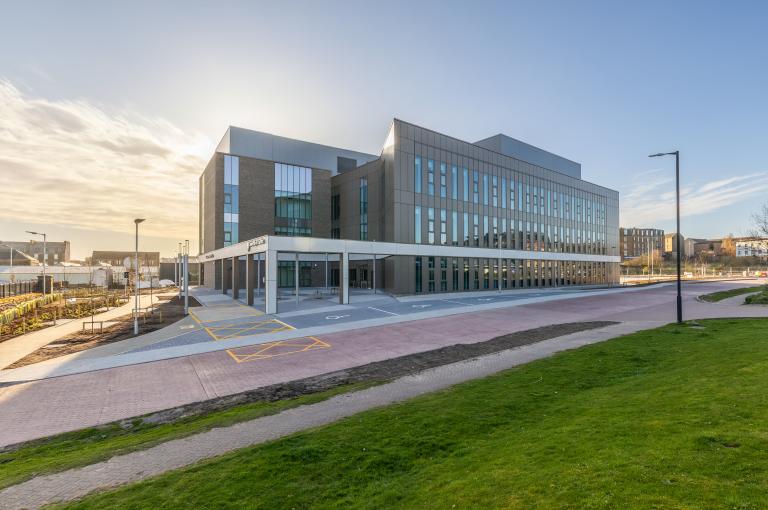
Life Sciences Innovation Centre, Inverness
Get in touch

Summary
A collaborative research space between academia and business
The Life Sciences Innovation Centre (LSIC) has been delivered by Robertson on the University of the Highlands and Islands (UHI) campus in Inverness. It will enable collaborative research between academia and business.
2,500 m²
innovation centre
190 jobs to be created
along with neighbouring NHS Highland development
203.8 tonnes CO2e
reduced through efficient site accommodation
Designed for business and academia to collaborate
The LSIC was designed by Austin-Smith:Lord so that businesses can work collaboratively with UHI scientists on innovative life sciences projects. It will provide access to high-tech research equipment and lab conditions to facilitate this.
The facilities will increase research in fields such as medical nanotechnology and active health and will support the region's life sciences sector.
The building also forms part of a wider project with NHS Highland, with an elective care facility being developed on the campus. Together, the two projects are forecast to create around 190 jobs, helping to attract and retain talent for the region as well as associated economic benefits.
A robust construction programme
Our targeted approach to project planning ensured we met key dates, including procuring the critical steelwork as early as possible, installing access stairs in conjunction with the steel frame, and allowing time for areas of feature architecture and the external finishes, to ensure this was uncompromised.
Sustainability
The Scottish Government set a target of 75% reduction in emissions by 2030, with the Highland Council committing Inverness to becoming carbon neutral by 2025 through their Carbon Clever initiative.
During construction, Robertson reduced carbon emissions through a variety of approaches, including:
- connecting to the grid from the outset, avoiding carbon-intensive diesel generators;
- using energy-efficient site accommodation – saving 203.8 tonnes of CO2e over the construction programme;
- using a 100% renewable electrical energy tariff;
- re-using a recycled plastic hoarding frontage that has been used on a previous Robertson site;
- utilising reusable pallet covers that minimise water damage to materials and reduce waste.
It reduced operational energy firstly through design analysis: minimising energy demand through form, fabric and detailing. The 'as-constructed' designs were then validated through thermography, airtightness testing and quality assurance inspections.
Images © Gillian Frampton/HIE
Project team
Architect: Austin-Smith: Lord
Principal contractor: Robertson Construction Northern
Civil & structural engineer: Fairhurst
M&E engineer: Pick Everard



